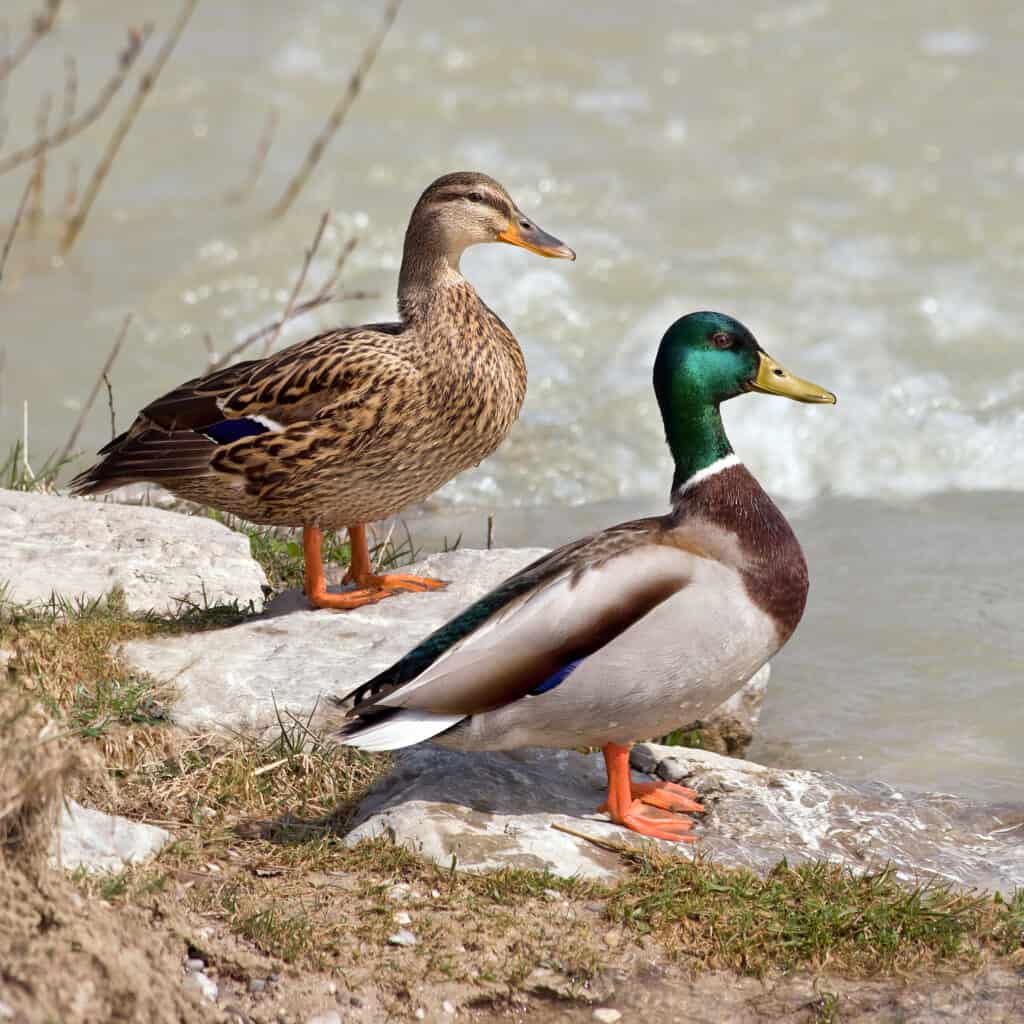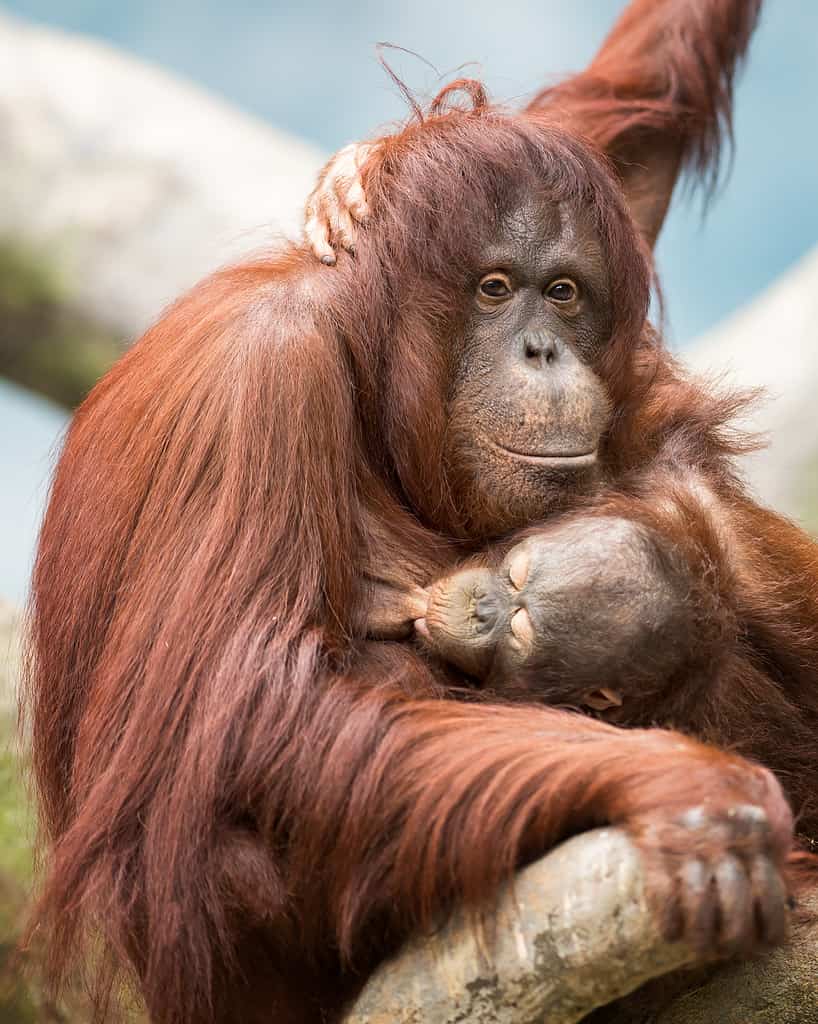When sexes of the same species exhibit distinctive characteristics considered morphological. This is especially true when the differences do not directly affect reproduction, but rather distinguishes the sexes visually or cognitively.
Summary
Sexual dimorphism may occur in either animals or plants, with secondary sex characteristics. Examples of this may include markings, weight, size, coloration, or cognitive and behavioral traits.
Is Sexual Dimorphism Always Extreme?
Humans versus orangutans offer a decent scale for understanding the level dimorphism. Humans exhibit approximately a 15% sexual dimorphism, while orangutans display more than 50% dimorphism.
In humans, males average out to be 9% taller and 16.5% heavier, with more body and facial hair than females.
Sexually mature male orangutans develop larger cheek flaps and throats sacs to display dominance. They will also grow to two to nearly three times the size of females. Their hair grows longer and thicker, as well, resulting in significantly different looking animals easy to tell apart by sex.
Common Examples of Sexual Dimorphism

Coloration on male and female mallard ducks is a distinctive form of visual sexual dimorphic characteristic.
©This picture was realized by Richard Bartz by using a Canon EF 70-300mm f/4-5.6 IS USM Lens, CC BY-SA 2.5 <https://creativecommons.org/licenses/by-sa/2.5>, via Wikimedia Commons – License
One common example of this condition may be quite familiar in birds. Cardinals, for example, show this dimorphism simply through the male bird’s coloration being the typical vivid red many people find familiar. Female cardinals, on the other hand, are muted in color, usually with browns and tans are the primary coloration, only with bright points such as the beak and muted tones of deep red in the feather crown or wings.
Other common examples of sexual dimorphism may be found in fish such as the Denison barb (or Roseline). As with many other popular aquarium fish, the species may usually be sexed by comparing the size of the fish, noting that females are usually larger.
Aggression utility traits have also developed over time, typically in males rather than females. Battle teeth and blunt heads for battering prey or for defense purposes, for example, have developed in some species for food and protection purposes.
Mating rituals, displays, and song-calling may also be distinctive between the sexes. Often, this is why males have brighter plumage in the bird world. These are for mating purposes and typically fall to males having the more elaborate or exaggerated coloration, calls, and other characteristics.
Are All Animals Sexually Dimorphic?

While many animals, such as the orangutan, are sexually dimorphic, many others are not.
©Nagel Photography/Shutterstock.com
While sexual dimorphism is frequently found throughout both the plant and animal kingdom, it is not found in all species. Monomorphism also occurs, which is the condition of both biological sexes appearing indistinguishable from each other.
Vertebrates, such as primates and elephant seals, are more likely to be sexually dimorphic than invertebrates. However, many insects are also sexually dimorphic, though often with the females larger than males. It is thought this is due to a natural advantage for insects in carrying eggs.
Animals, Fish, Birds, Plants, and Insects That Display Sexual Dimorphism

A male peafowl in full mating display with vivid colors. Females are far more muted in color and do not have the large, luxurious tails.
©RudiErnst/Shutterstock.com
Common creatures and plants with sexual dimorphic characteristics include:
- Homo sapiens (humans)
- Orangutans
- Western lowland gorillas
- Peafowls
- Pheasants
- Elephant seals
- Denison barb fishes
- Mandrills
- Orange tip butterflies
- Mute swans
- Black-casqued hornbills
- Catasetum orchids
- Geraniums
- Vallisneria americanas
- Cannabis sativas
- Mallard ducks
- Common brimstone butterfly
- Two-spotted gobies
- Mississippi map turtles
- Anole lizards
- Painted dragon lizards
- Eclectus parrot
- Triplewart seadevil anglerfish
- African lions
- Mandarin ducks
Pronunciation
ˈsekʃuəl daɪˈmɔrˌfɪzəm



